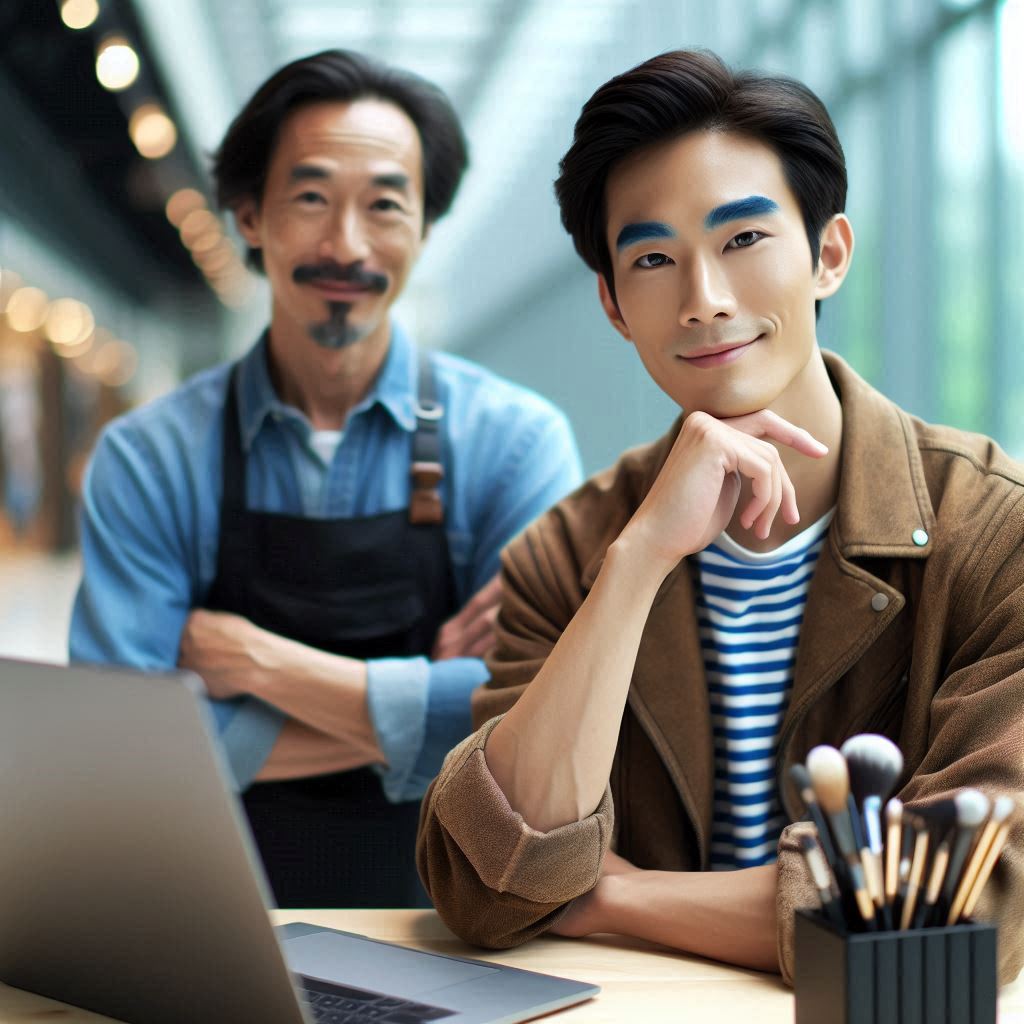Introduction
Special effects (SFX) art and design create the stunning visual elements seen in film and television.
This field combines creativity and technical skill to produce realistic and imaginative effects.
Traditionally, SFX relied heavily on practical methods, involving physical materials and manual techniques.
However, the rise of digital tools has significantly transformed the industry.
Software and digital technologies now play a crucial role in SFX creation.
These tools allow artists to achieve more complex and precise effects with greater efficiency.
Digital tools can simulate explosions, weather, and fantastical creatures with incredible accuracy.
The growing use of digital tools in SFX has changed the landscape of the industry.
Artists now blend practical effects with digital enhancements to achieve seamless results.
This integration offers new possibilities for storytelling and visual artistry, pushing the boundaries of what is possible.
Discussing the impact of digital tools on SFX art and design is essential.
Understanding how these technologies influence the industry helps appreciate their benefits and challenges.
It also highlights how digital advancements shape the future of SFX, offering insights into emerging trends and techniques.
Exploring this topic reveals the profound ways digital tools have revolutionized SFX art and design, enhancing creativity and innovation in the field.
Evolution of SFX Art and Design
History of SFX art and design
Throughout history, special effects (SFX) art and design have played a crucial role in creating immersive visual experiences in various forms of media.
Traditional methods of SFX art and design involved practical effects, such as makeup, prosthetics, and miniatures, to bring fantasy worlds to life.
However, with the rapid advancement of technology, digital tools have revolutionized the way in which SFX art and design are approached.
How traditional methods have evolved with the introduction of digital tools
- Introduction of Computer-Generated Imagery (CGI): CGI marked a significant turning point in SFX art and design, allowing for the creation of realistic and fantastical visuals.
- Integration of Motion Capture Technology: Motion capture technology enabled artists to capture realistic movements and expressions, adding a new level of authenticity to SFX.
- Advancements in 3D Modeling and Animation: 3D modeling and animation software have made it possible to create intricate and dynamic visual effects that were previously unimaginable.
Key Milestones in the Use of Digital Tools in SFX Art and Design
- Release of “Jurassic Park” (1993): This film showcased the power of CGI in creating lifelike creatures, setting a new standard for SFX in movies.
- Development of Virtual Reality (VR) and Augmented Reality (AR) Applications: VR and AR have opened up new possibilities for interactive and immersive SFX experiences.
- Emergence of 3D Printing Technology: 3D printing has revolutionized the creation of props and costumes in SFX art and design, offering a cost-effective and customizable solution.
In fact, the impact of digital tools on SFX art and design has been profound, pushing the boundaries of creativity and innovation in the industry.
As technology continues to evolve, we can expect to see even more groundbreaking developments that will shape the future of SFX art and design.
Read: Innovative SFX Techniques in Modern Cinema
Transform Your Career Today
Unlock a personalized career strategy that drives real results. Get tailored advice and a roadmap designed just for you.
Start NowAdvantages of Digital Tools in SFX Art and Design
The efficiency and precision that digital tools offer
Digital tools in SFX art and design provide a level of efficiency and precision that traditional methods cannot match.
These tools allow artists to work with incredible detail and accuracy, resulting in stunning visual effects that captivate audiences.
How digital tools have expanded the possibilities for creativity in SFX art
The use of digital tools has expanded the possibilities for creativity in SFX art.
Artists can now experiment with different techniques and effects that were previously impossible to achieve.
This has led to a surge in innovation and groundbreaking visuals in the industry.
The cost-effectiveness and time-saving benefits of using digital tools
One of the key advantages of digital tools in SFX art and design is their cost-effectiveness.
Traditional methods often require expensive materials and resources, whereas digital tools can be more affordable and accessible.
This allows artists to create high-quality effects without breaking the bank.
Furthermore, digital tools save a significant amount of time in the production process.
Artists no longer have to spend hours on tedious tasks like manual rendering or editing.
With the click of a button, they can achieve professional results in a fraction of the time, allowing for faster turnaround and increased productivity.
Overall, the advantages of digital tools in SFX art and design are undeniable.
From efficiency and precision to expanded creativity and cost-effectiveness, these tools have revolutionized the industry and continue to push the boundaries of what is possible in visual storytelling.
Read: Beginner’s Guide to SFX Makeup and Prosthetics
Impact on Skillset and Training
How the use of digital tools has impacted the skillset required for SFX artists
Digital tools have transformed the skillset required for special effects (SFX) artists.
Traditionally, SFX artists relied heavily on hands-on techniques.
Crafting realistic effects demanded extensive manual skills, from sculpting models to mixing paints.
With the rise of digital technology, the focus has shifted.
Artists now need to master software tools like Adobe After Effects, Blender, or ZBrush.
These programs allow for complex and intricate designs that would be difficult to achieve manually.
Transform Your Career Today
Unlock a personalized career strategy that drives real results. Get tailored advice and a roadmap designed just for you.
Start NowThe need for training and adaptation to new technologies in the industry
The need for training and adaptation has become crucial.
Artists must stay updated with rapidly evolving digital tools and software.
Training programs and workshops are essential for learning new technologies.
Institutions and online courses offer specialized classes in digital SFX techniques.
Artists who adapt to these technologies can enhance their creative capabilities and stay competitive in the industry.
How traditional skills are still valuable in combination with digital tools
Despite the shift toward digital tools, traditional skills remain valuable.
Handcrafted techniques such as practical effects and model-making complement digital creations.
These skills provide a tangible quality that digital tools alone may not achieve.
Combining traditional methods with digital tools can lead to more realistic and compelling effects.
For example, blending practical models with digital enhancements creates a more immersive experience for viewers.
In summary, the impact of digital tools on SFX art and design is profound.
The skillset required has evolved, emphasizing the need for digital proficiency.
Training and adaptation are vital for staying current in the field.
However, traditional skills still play a crucial role in achieving high-quality, realistic effects.
Embracing both digital and traditional methods can lead to innovative and striking SFX designs.
Read: Freelancing vs. Studio Jobs for SFX Artists

Collaboration and Communication
Improved Collaboration in SFX Industry
Digital tools have facilitated a new era of collaboration in the SFX industry.
Artists and designers can now work together seamlessly, breaking down geographical barriers and time constraints.
This has opened up opportunities for global collaboration and cross-disciplinary projects, leading to innovative and unique creations in the world of SFX art and design.
Sharing and Editing Work Remotely
One of the key advantages of digital tools in the SFX industry is the ease of sharing and editing work remotely.
Transform Your Career Today
Unlock a personalized career strategy that drives real results. Get tailored advice and a roadmap designed just for you.
Start NowArtists no longer need to be in the same physical location to collaborate on a project.
With cloud-based platforms and file-sharing services, artists can share their work instantly and receive feedback from team members regardless of where they are located.
This has greatly improved efficiency and productivity in SFX projects, as artists can work on different aspects of a project simultaneously, speeding up the overall production process.
Importance of Effective Communication
Effective communication is crucial when utilizing digital tools for SFX art and design projects.
Clear communication ensures that all team members are on the same page and working towards a common goal.
Digital tools enable artists to share ideas, provide feedback, and make edits in real-time, making communication more efficient and eliminating misunderstandings.
By fostering open and effective communication, artists can streamline their workflow, improve the quality of their work, and deliver projects on time and within budget.
Read: Day in the Life of a Special Effects Makeup Artist
Challenges and Limitations of Digital Tools
Potential Challenges
- Learning Curve: New software and tools may require time to learn and master.
- Compatibility Issues: Some tools may not work well with existing software.
- Technical Difficulties: Software glitches or hardware limitations can hinder progress.
- Cost: High-end software and equipment can be expensive for beginners.
- Updates: Regular updates may disrupt workflows or introduce new bugs.
Limitations in Replicating Effects
- Realistic Textures: Achieving realistic textures digitally can be challenging.
- Physical Interactions: Simulating physical interactions accurately may prove difficult.
- Complex Particles: Creating complex particle effects may require advanced skills.
- Lighting Effects: Replicating intricate lighting effects can be time-consuming.
- Dynamic Animations: Creating dynamic animations may require specialized tools.
Overcoming Challenges
- Training and Education: Investing in training can reduce learning curves.
- Collaboration: Working with experts can help overcome technical difficulties.
- Research and Experimentation: Trying new techniques can push boundaries.
- Networking: Connecting with other professionals can provide insights and solutions.
- Feedback: Seeking feedback can help identify areas for improvement.
Overall, while digital tools in SFX art and design offer numerous benefits, they also come with challenges and limitations that artists and designers need to navigate.
By understanding these potential hurdles and exploring ways to overcome them, creators can push the boundaries of what is possible in the world of SFX art and design.
Impact on Industry Trends
With the advancement of technology, the SFX art and design industry has undergone a significant transformation.
The use of digital tools has had a profound impact on industry trends, shaping the way artists and designers create visual effects.
How the use of digital tools has influenced trends in SFX art and design
Digital tools have revolutionized the way visual effects are created in the entertainment industry.
Artists now have access to a wide range of software and hardware that enable them to create stunning effects that were once considered impossible.
The use of digital tools has made it easier for artists to experiment with different techniques and styles, allowing them to push the boundaries of traditional SFX art and design.
This has led to a proliferation of new and innovative visual effects that captivate audiences and enhance storytelling in films, TV shows, and video games.
The shift towards more realistic and immersive effects with digital tools
One of the most significant impacts of digital tools on SFX art and design is the shift towards more realistic and immersive effects.
Artists can now create visuals that are indistinguishable from reality, blurring the line between fantasy and the real world.
The use of digital tools has allowed artists to achieve a level of detail and realism that was previously unattainable.
From lifelike character animations to breathtaking special effects, digital tools have raised the bar for visual storytelling in the entertainment industry.
Transform Your Career Today
Unlock a personalized career strategy that drives real results. Get tailored advice and a roadmap designed just for you.
Start NowEmerging technologies that are shaping the future of SFX art and design
As technology continues to evolve, new emerging technologies are shaping the future of SFX art and design.
From virtual reality and augmented reality to machine learning and artificial intelligence, these technologies are pushing the boundaries of what is possible in visual effects.
Virtual reality, for example, allows artists to create immersive experiences that transport audiences to new and exciting worlds.
Augmented reality, on the other hand, enables artists to overlay digital effects onto the real world, creating interactive and engaging experiences for viewers.
Machine learning and artificial intelligence are also playing a significant role in SFX art and design, enabling artists to automate certain processes and create more realistic and dynamic visuals.
These technologies are revolutionizing the way visual effects are created and are likely to shape the future of the SFX art and design industry for years to come.
Conclusion
The impact of digital tools on SFX art and design is evident in the industry today.
These tools have revolutionized the creative process, allowing artists to explore new techniques and push the boundaries of what is possible.
It is important for artists to adapt to new technologies while preserving their traditional skills.
By combining the old with the new, creators can achieve incredible results and stay relevant in a rapidly changing field.
As we move forward, it is crucial to encourage further exploration of the possibilities that digital tools offer for the future of SFX art and design.
The potential for innovation and growth in this area is vast, and artists who embrace these tools will be at the forefront of shaping the industry.
[E-Books for Sale]
The Big Book of 500 High-Paying Jobs in America: Unlock Your Earning Potential
$19.99 • 500 High-Paying Jobs • 330 pages
Explore 500 high-paying jobs in America and learn how to boost your career, earn more, and achieve success!
See All 500 High-Paying Jobs of this E-Book
1001 Professions Without a Degree: High-Paying American Jobs You Can Start Now
$19.99 • 1001 Professions Without a Degree • 174 pages
Discover 1001 high-paying jobs without a degree! Unlock career tips, skills, and success strategies for just $19.99!




